Peñíscola Places of Interest
The city of Peñíscola (emphasis on the letter I!) is famous for an ancient fortress located on a peninsula, which is a rock rising from the sea, connected to the shore by a sand spit. Hence the name, from the Latin peninsula - "peninsula". A fortified trading post was founded here by the Phoenicians in the 7th century BC, they were replaced by the Carthaginians, then the Romans. In the 5th century, the peninsula was ruled by the Byzantine Empire, which was replaced two centuries later by the Arabs, who built a fortress here and named it Banaskula. The heyday of Peñíscola began in the 14th century, when the Knights Templar built a fortress here, which became one of the most impregnable on the Mediterranean Sea.
 We go by train to Benicarlo-Peniscola station, then by bus Vinaros-Peniscola to the end, to the fortress itself (schedule). In summer, the bus stops right at the railway station, in winter - in the
city center next to the Monastery of St. Francis (address Carrer San Francisco, 29)
We go by train to Benicarlo-Peniscola station, then by bus Vinaros-Peniscola to the end, to the fortress itself (schedule). In summer, the bus stops right at the railway station, in winter - in the
city center next to the Monastery of St. Francis (address Carrer San Francisco, 29)
Gate of St. Peter
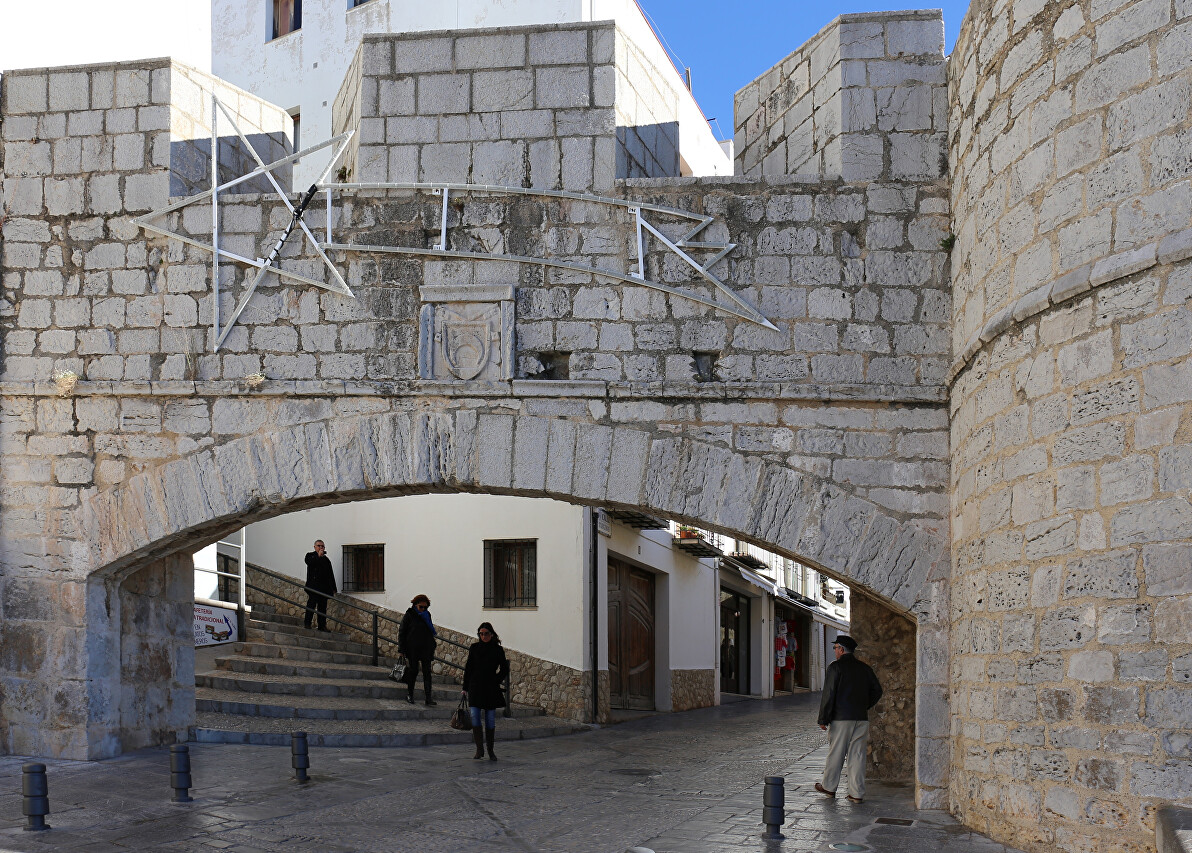
A bus from Benicarlo took me directly to the fortress walls and I headed
to the old town through the Puerta de Sant Pere Gate. The portal was
designed by Filibert Bertalla in 1414, during the time of Benedict XIII,
known as Pope (or Antipope) Luna, as evidenced by the disgraced
cardinal's coat of arms above the arch...read more 
Casa Juanita Guest House
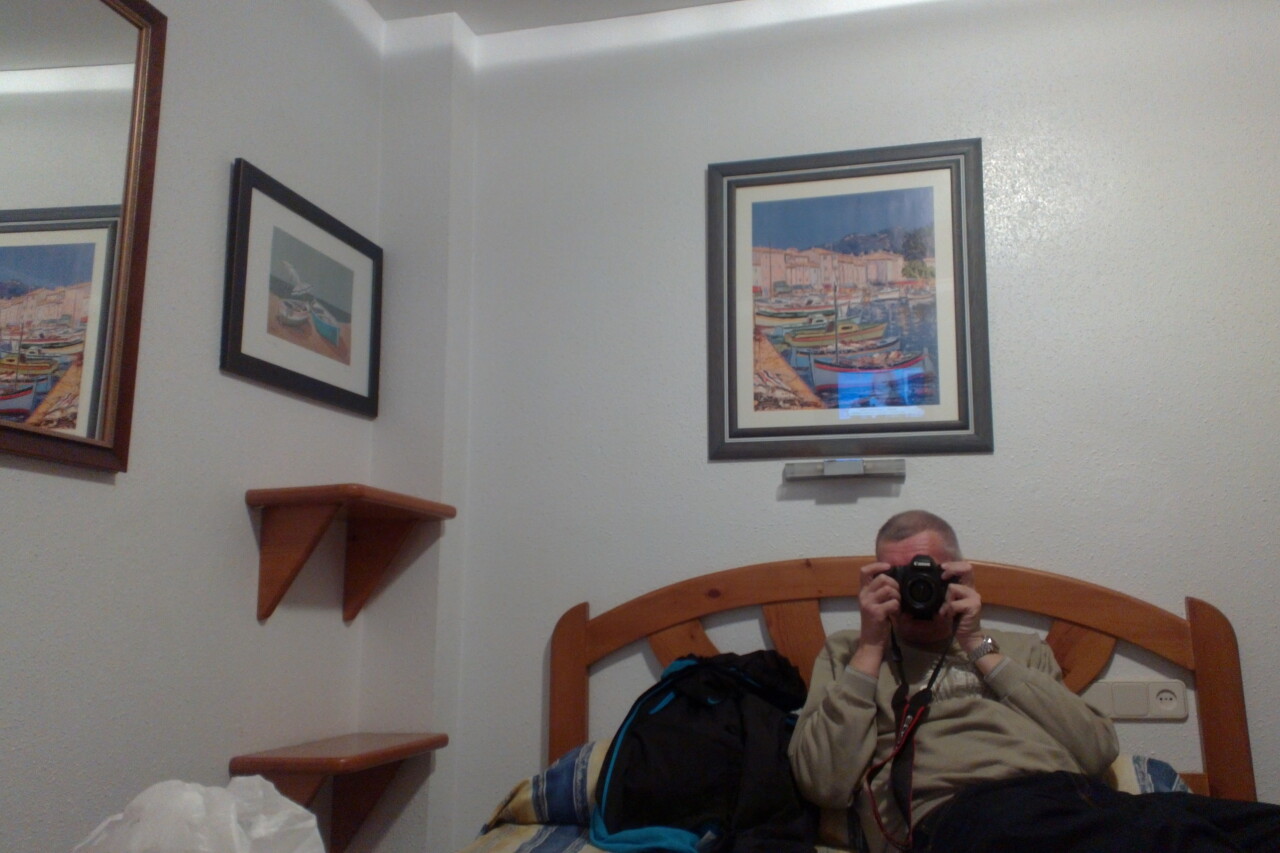
I booked a room in a small hotel called Pensió Casa Juanita, located
right above the Sanat Maria Gate. The blank wall in front of the
entrance turned out to be the wall of St. Mary's Church, but I found out
much later...read more 
Capelleta de Santa Anna
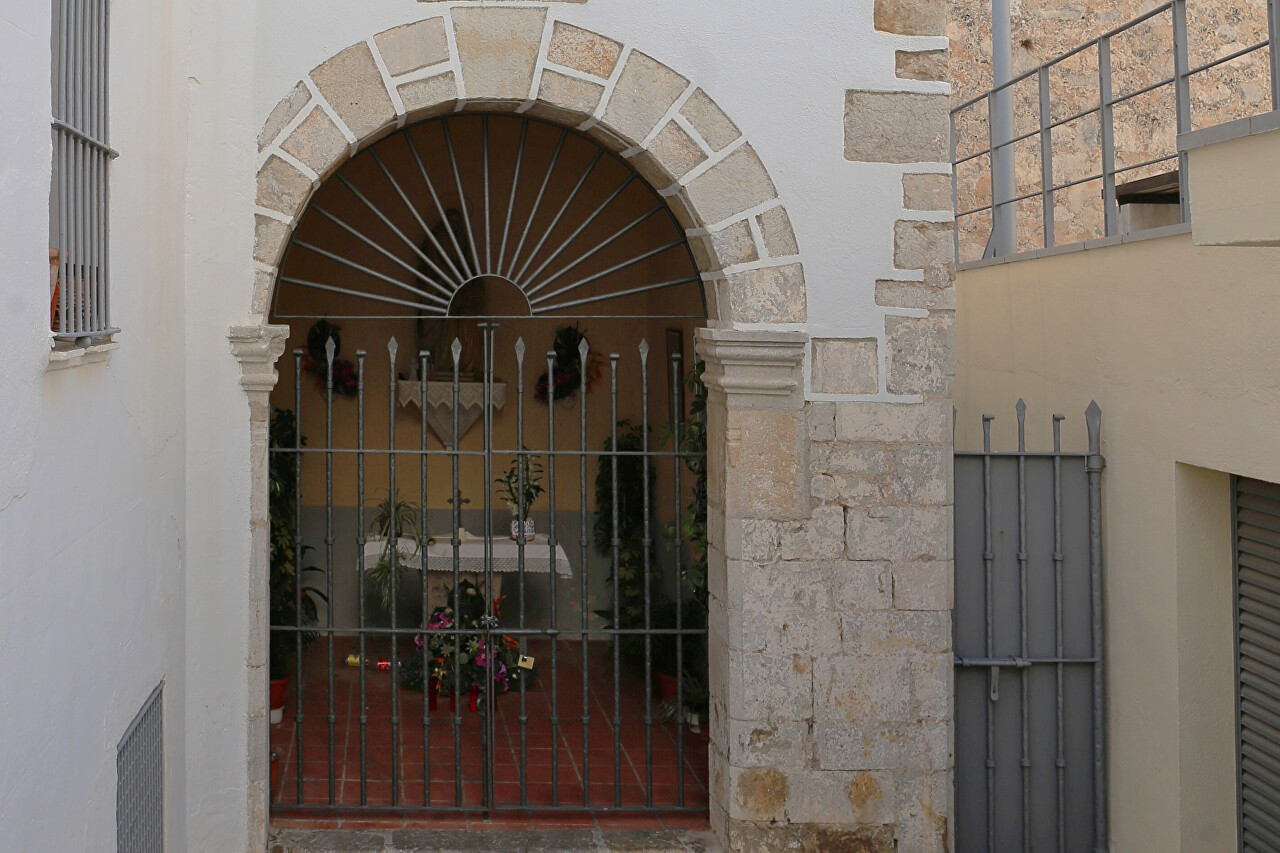
After walking a block from St.Peter's Gate along Calle Ruiz de Carlos,
on the left, in a small impasse, you can see the Chapel of St. Anna
(Capelleta de Santa Anna or Ermita de Santa Ana). There used to be a
medieval church with the same name on this site, but it was destroyed in
January 1812 during the siege of the city by Napoleonic troops of
General Severoli...read more 
Bastion Botnet
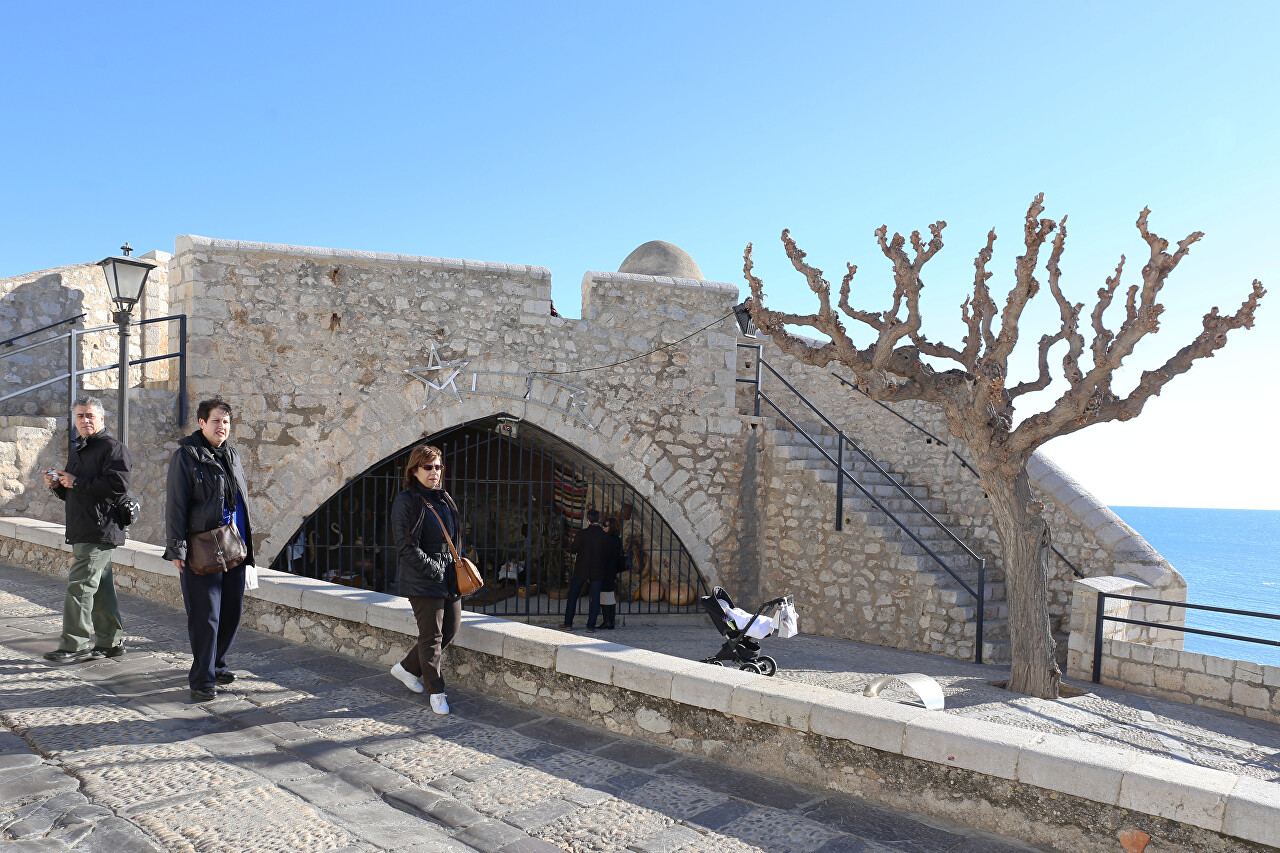
The fortifications of Peniscola were built at different times, starting
from the era of the Phoenicians and Carthaginians. Then there were the
Greeks and Romans, and at one time there was a Moorish fortress. The
rock, connected to the shore by a sandbar, became truly impregnable in
the early 14th century, when the Knights Templar built a powerful castle
here...read more 
Calle del Principe
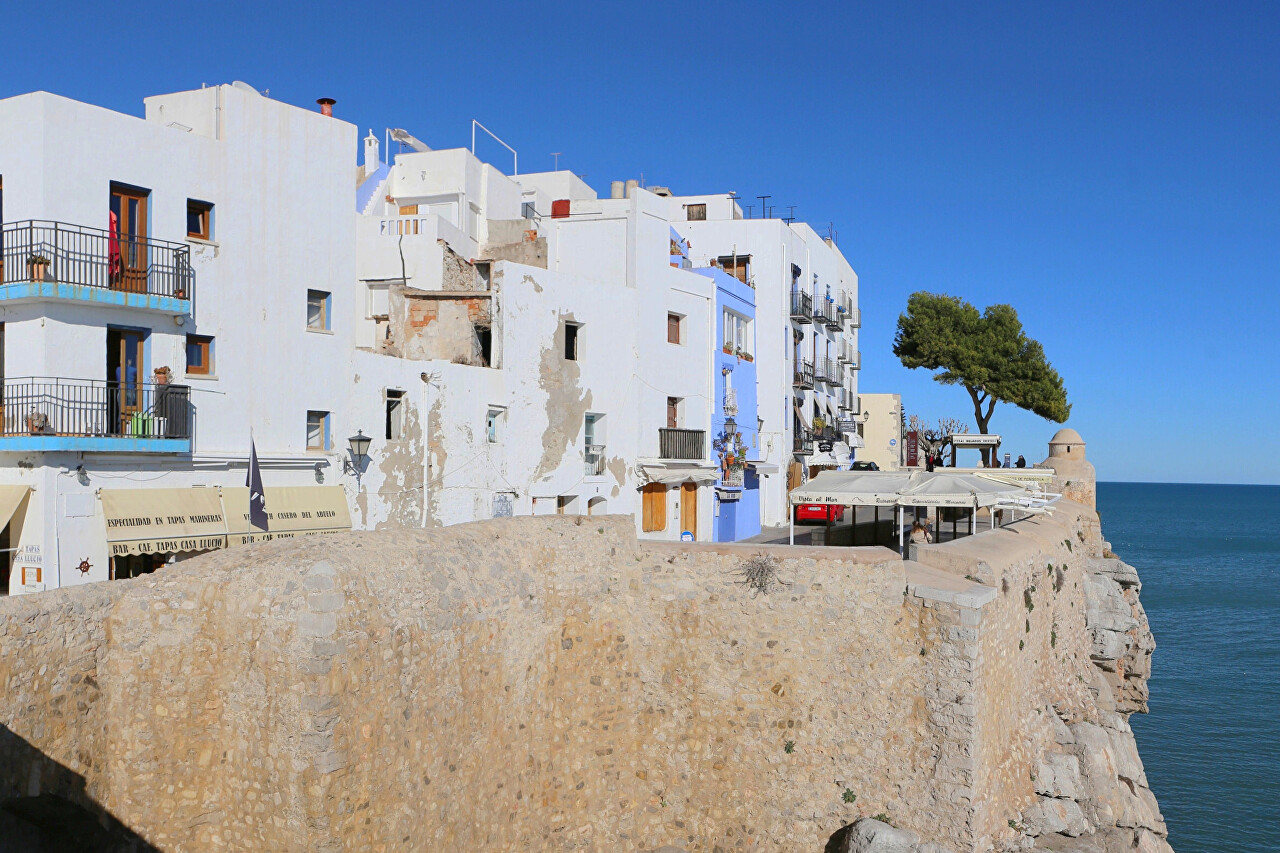
From the Bonet bastion starts the Calle del Principe, the sea front of
the old town. The street stretches along the fortress wall, built on a
natural rock base...read more 
Tiled Balconies in Peñíscola
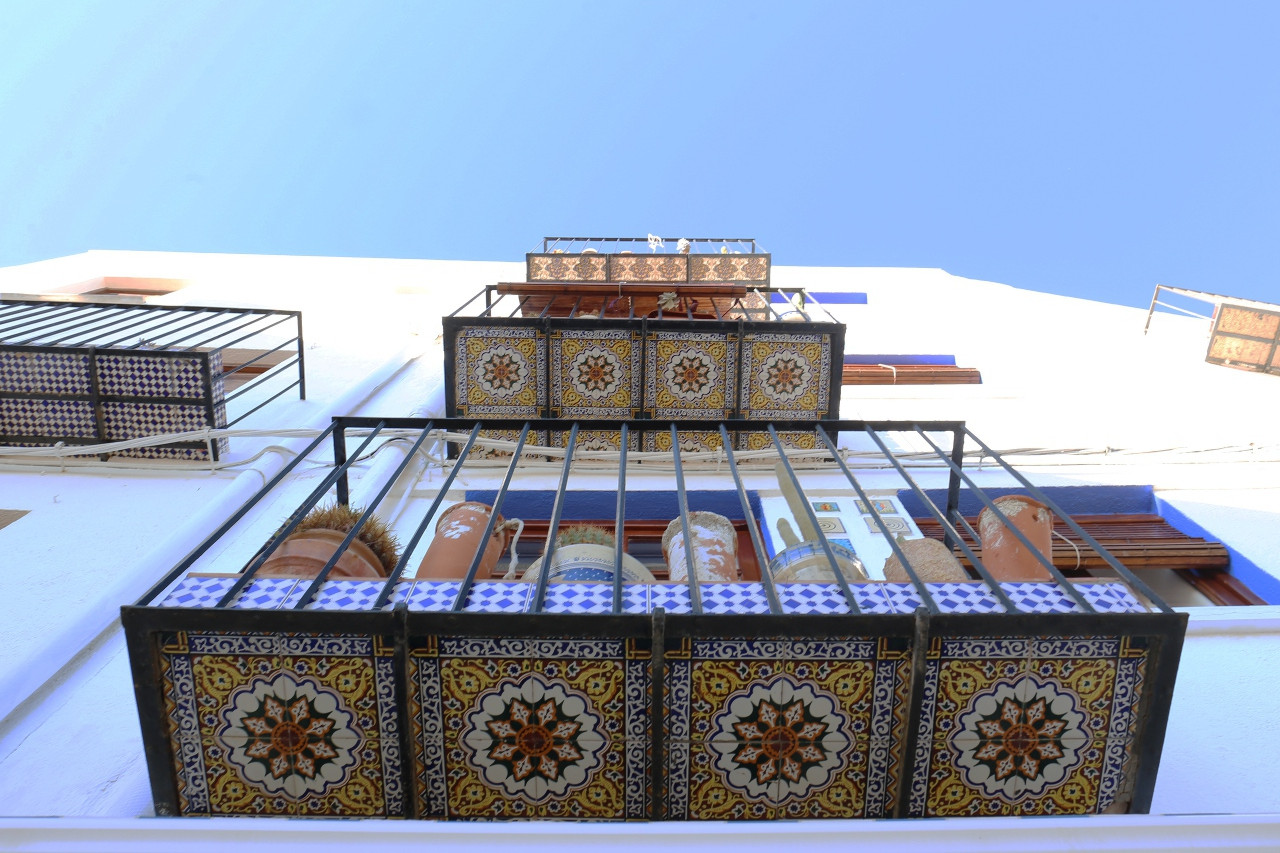
The houses of the old town are not distinguished by architectural
delights, and it would seem that they look the same. However, each house
has its own personality, which is given to them by the wonderful
ornaments of ceramic tiles decorating the balconies...read more 
Casa de la Conchas
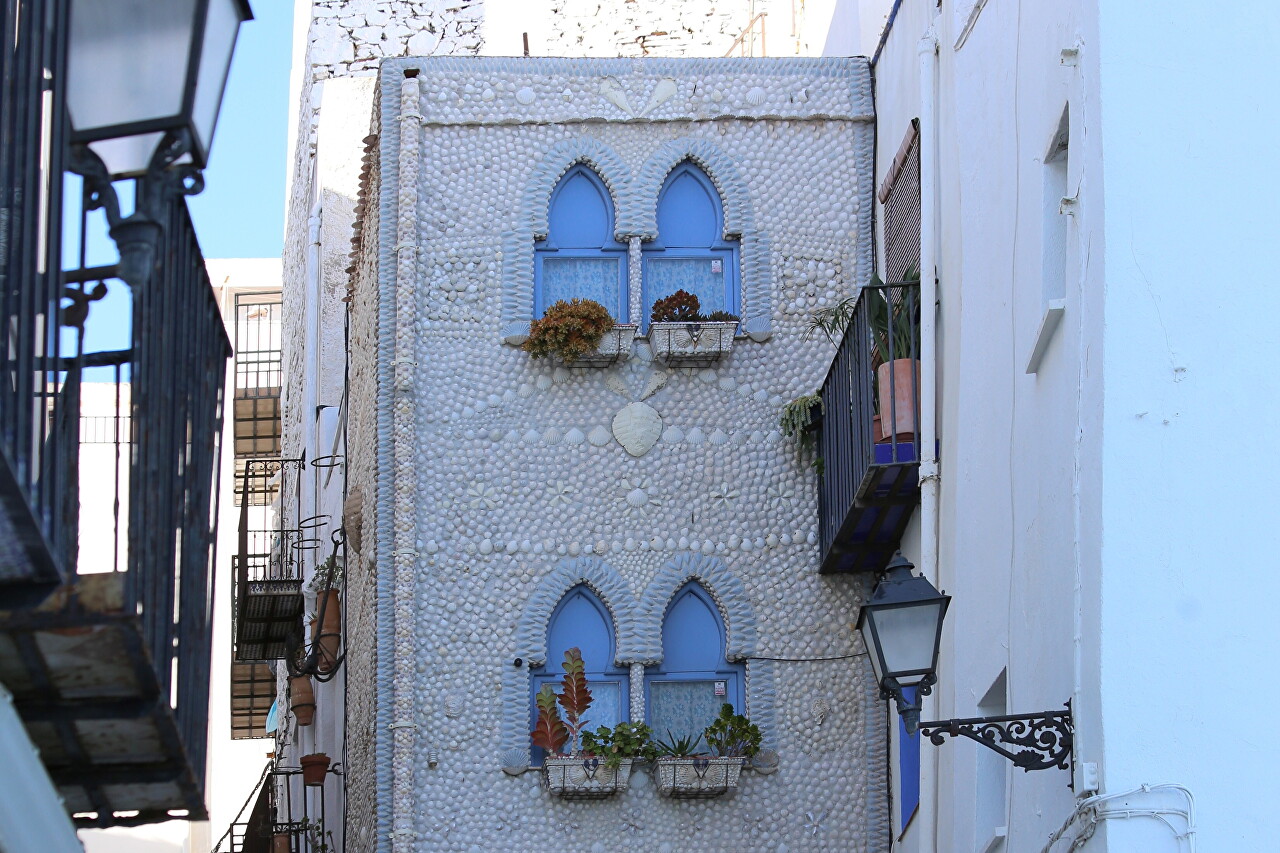
This story began in the fifties of the last century, when an economic
crisis broke out in Spain. As
a result, the family of Timoteo Pau and Justa Mir Soria with three
young children were left without work. At
that time, Spain was not yet a world center of mass tourism, and did
not have the appropriate infrastructure, but travelers visited
Peñíscola. Juste came up with the idea of offering tourists individual
tours of the city
and the castle of Papa Luna, leaving the reward at their discretion...read more 
Peñíscola Lighthouse
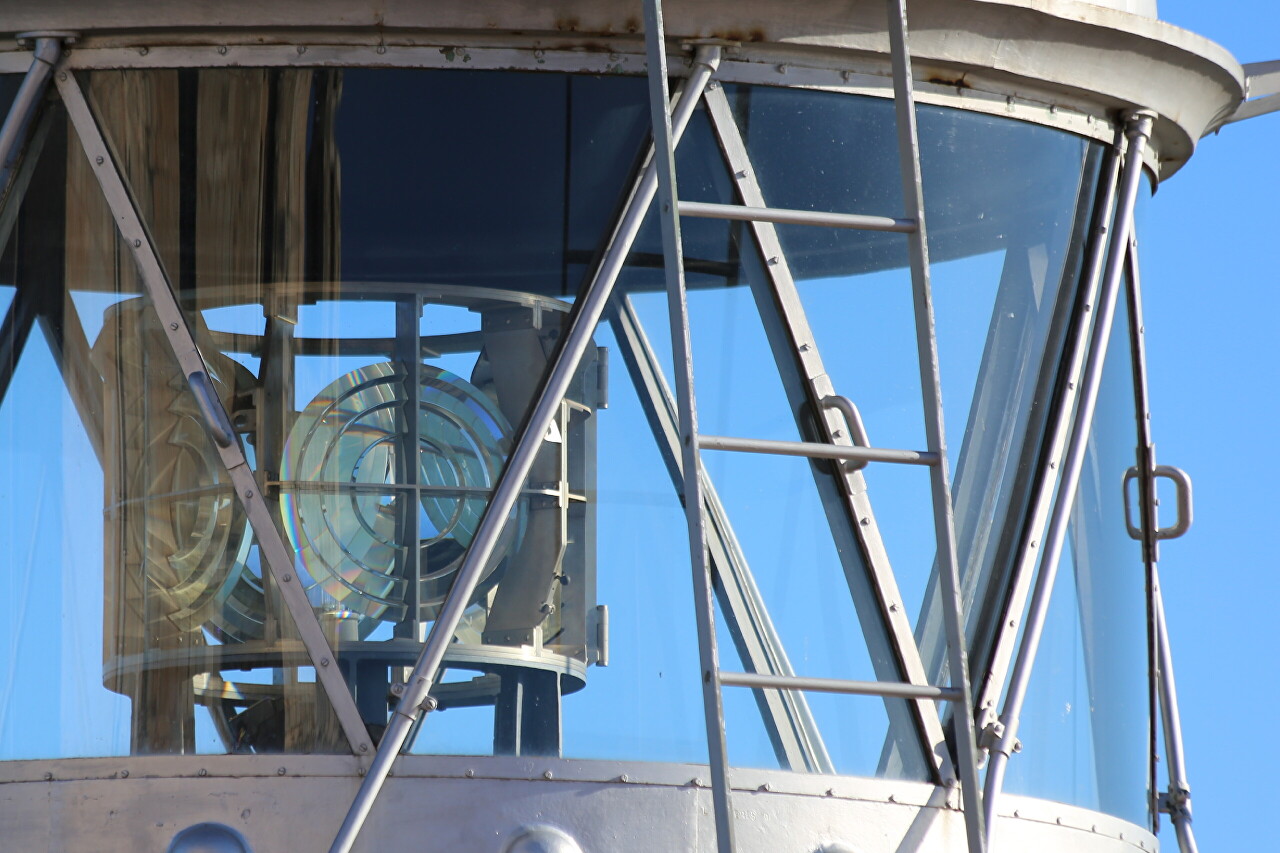
In 1899, an 11-meter-high lighthouse (Faro de Peñíscola) was built in
front of the main entrance to the fortress, with a paraffin lamp that
could be seen from 14 miles away...read more 
Castell del Papa Luna
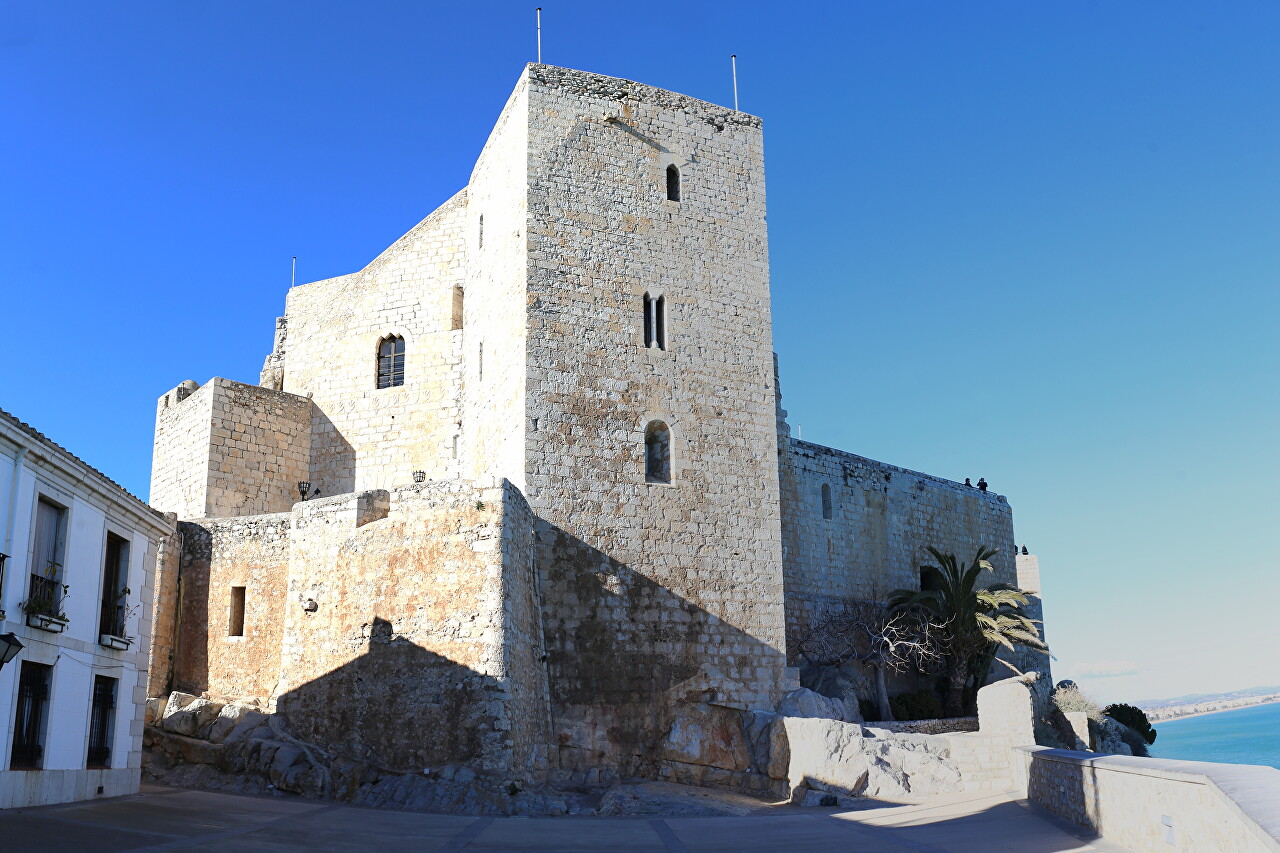
In the following century, in 1235, the castle came under the rule of the
Aragonese crown, and in 1294, King Jaime II the Just (Jaime II el
Justo) transferred the peninsula to the Templar order. In the same year,
the knights, under the leadership of Master Berenguer de Cardona, began
the construction of the castle, which was completed in 1307...read more 
Monument of Benedict XIII
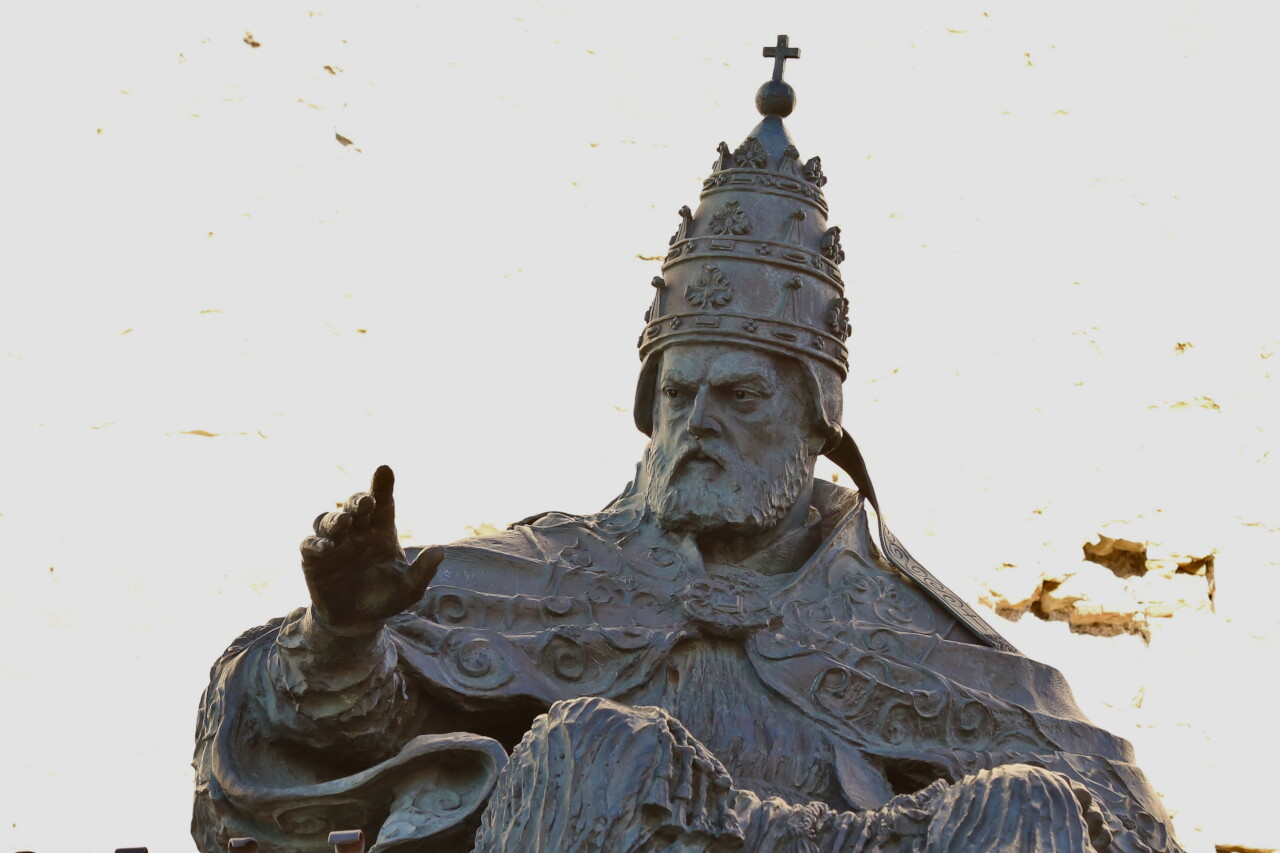
Pedro Martinez de Luna was born in 1328 in the Aragonese castle of
Illueca,
in an aristocratic family that had its roots in the line of the kings of
Navarre (Pamplona). In his youth, the future cardinal studied law and
ecclesiastical law in France, at the University of Montpellier...read more 
Peñíscola Castle Interiors

Take the stairs to the second floor of the castle, in one of the preserved towers of the main portal. Here
are the apartments of the "antipope" Benedict XIII (Palacio Papal),
where he spent the last years of his life after his excommunication...read more 
Gothic Hall in Peñíscola Castle
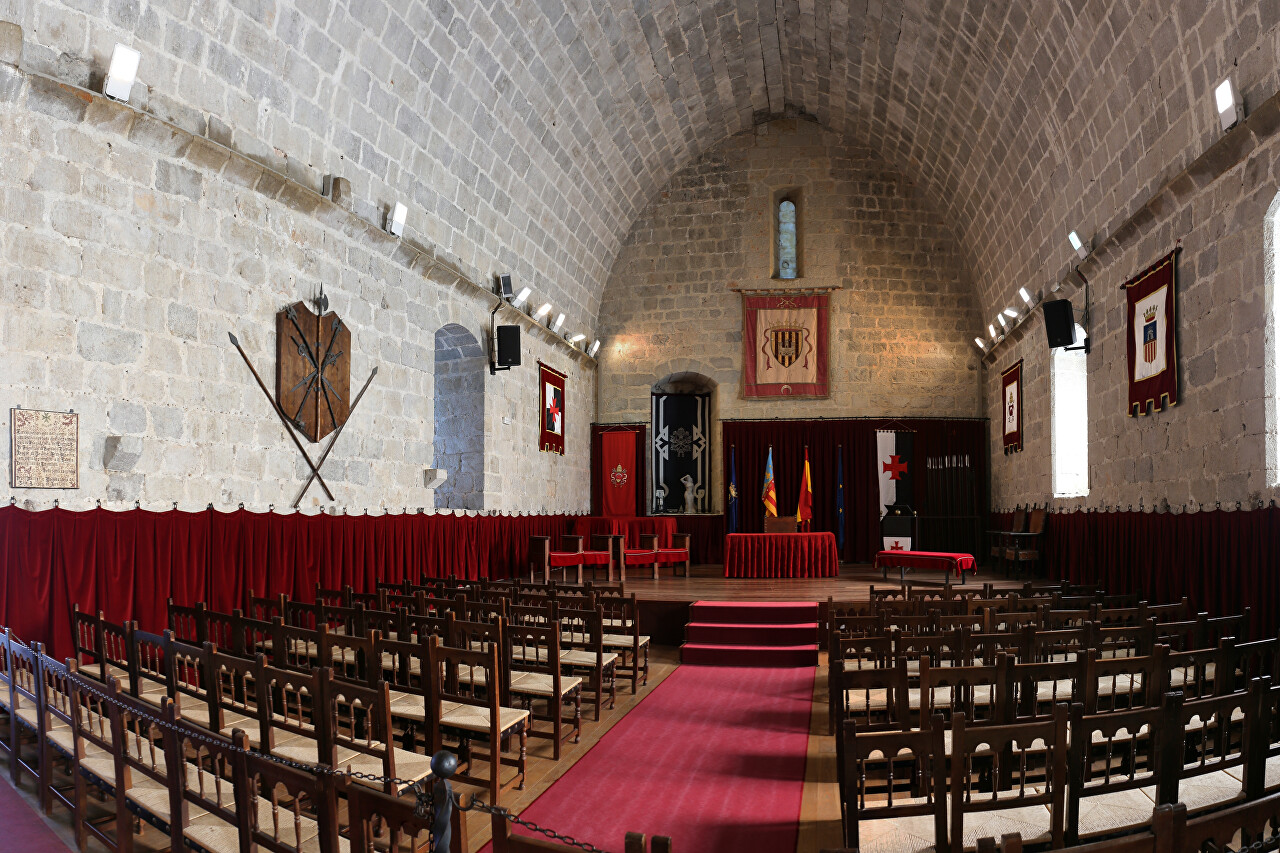
The front wall of the hall is decorated with the standard of the Templar
Master Berenguer de Cardona. In the Middle Ages, meetings of knights
were held here, and now, thanks to the excellent acoustics, the hall is
used for concerts. A draped door in a niche leads to the inner chambers
of the Pope Luna (Palacio Papal)...read more 
Peñíscola Views the Pope Luna Tower
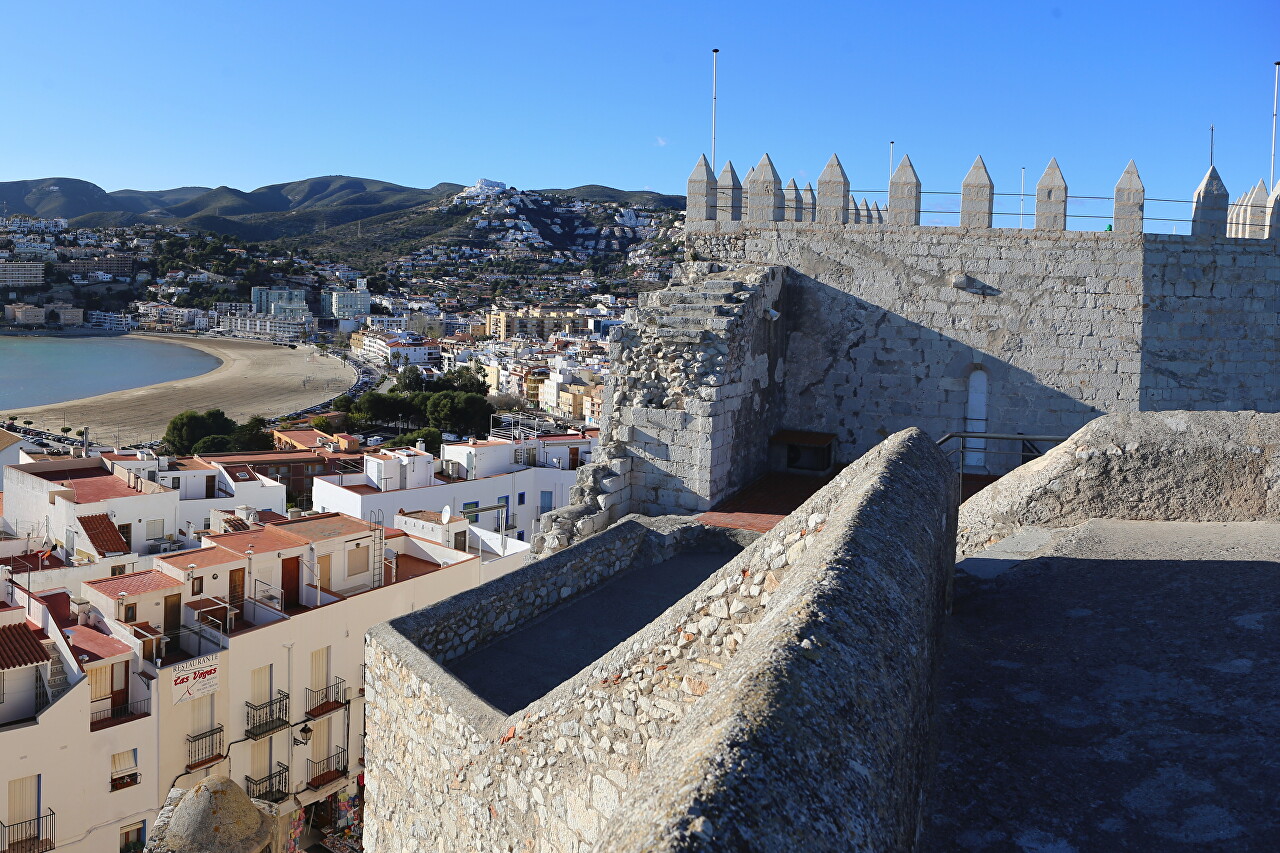
After getting acquainted with the interior of the castle, we will go up
to the right tower of the main gate, called the Tower of the Pope Luna,
as it housed the apartments of the disgraced canonic...read more 
Church of the Ermitana
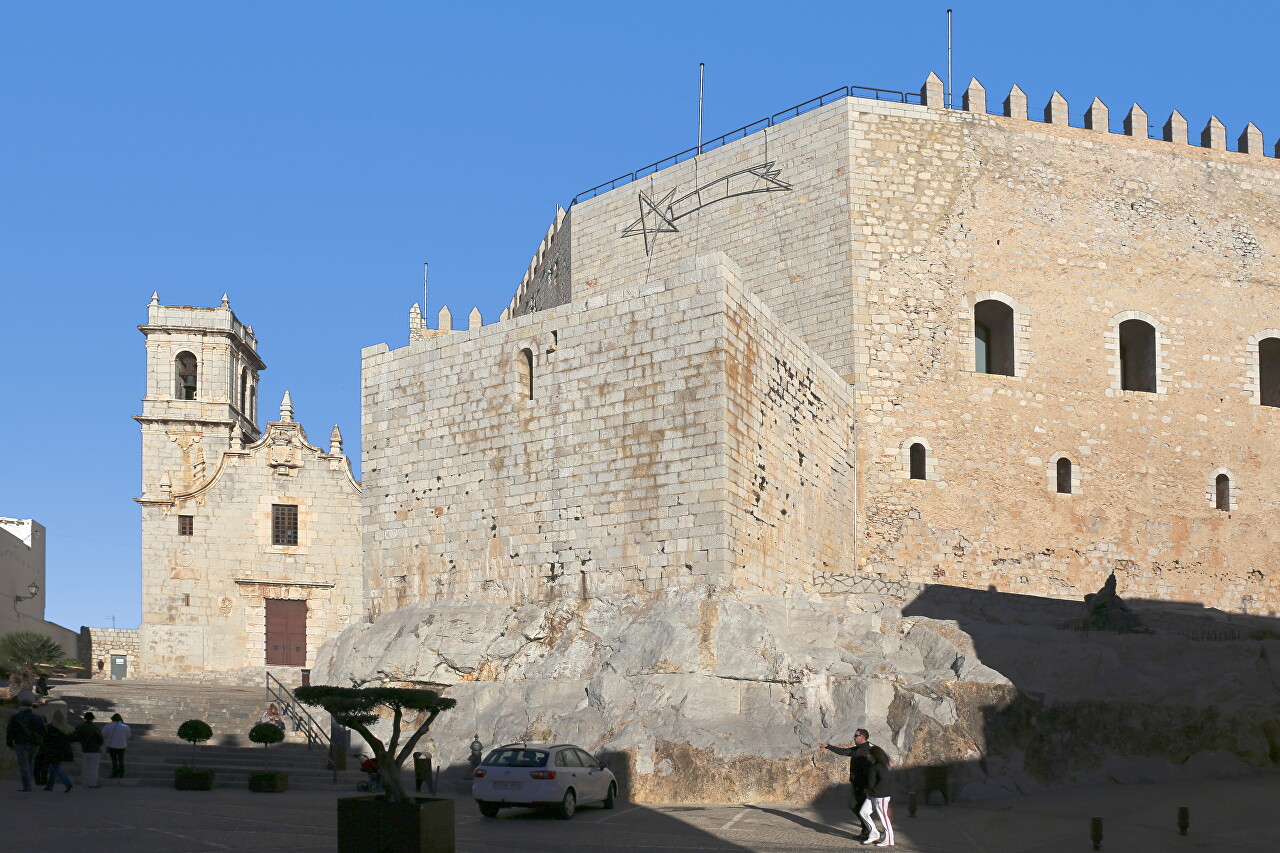
The church was built from 1708 to 1714, in the era of King Felipe V, so
the pediment above the main portal is decorated with his coat of arms.
The building has thick walls and small windows, which suggests that it
has a defensive significance...read more 
El Parc d'Artilleria
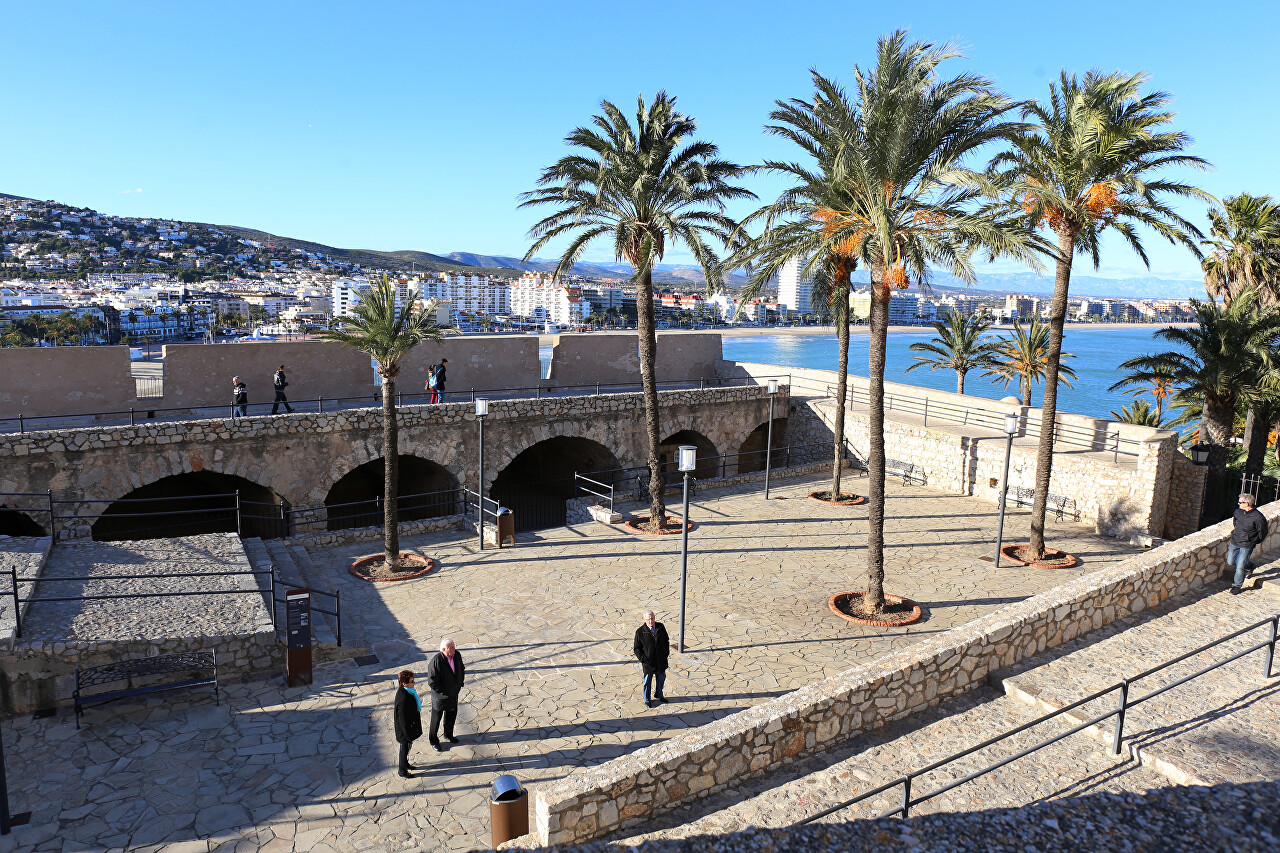
The fortifications were built at the end of the 16th century on the
instructions of King Felipe II, and the famous Italian fortifier Juan
Bautista Antonelli supervised the construction of the batteries...read more 
Olvido Viewpoint
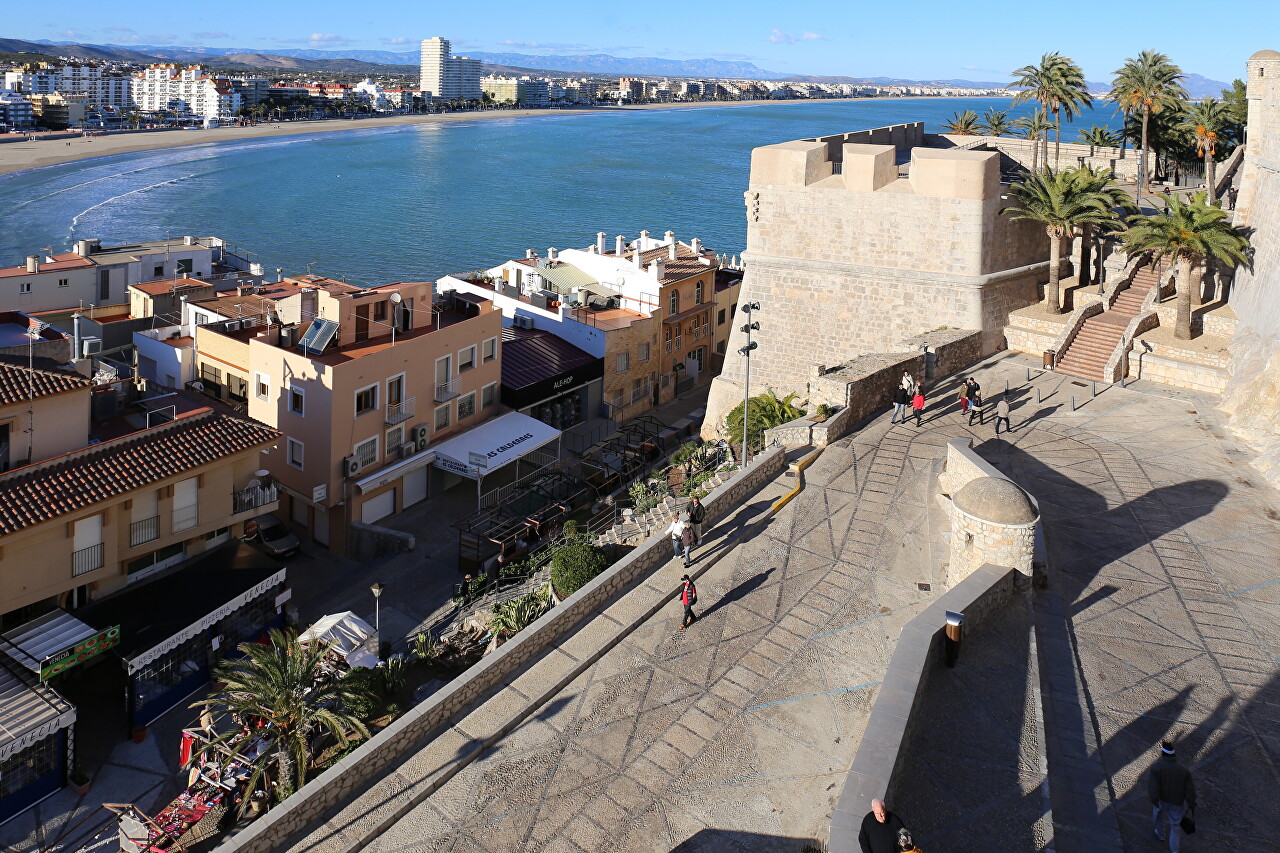
From the Artillery Park, I went back up the street of Olvido, which runs
along the crest of the wall. There were two batteries located here: the
upper one (Bateria Alta del Olvido) and the lower one (Bateria Baja del
Olvido). This is a place with the best views, there are several
binoculars...read more 
Plaza Ayuntamento
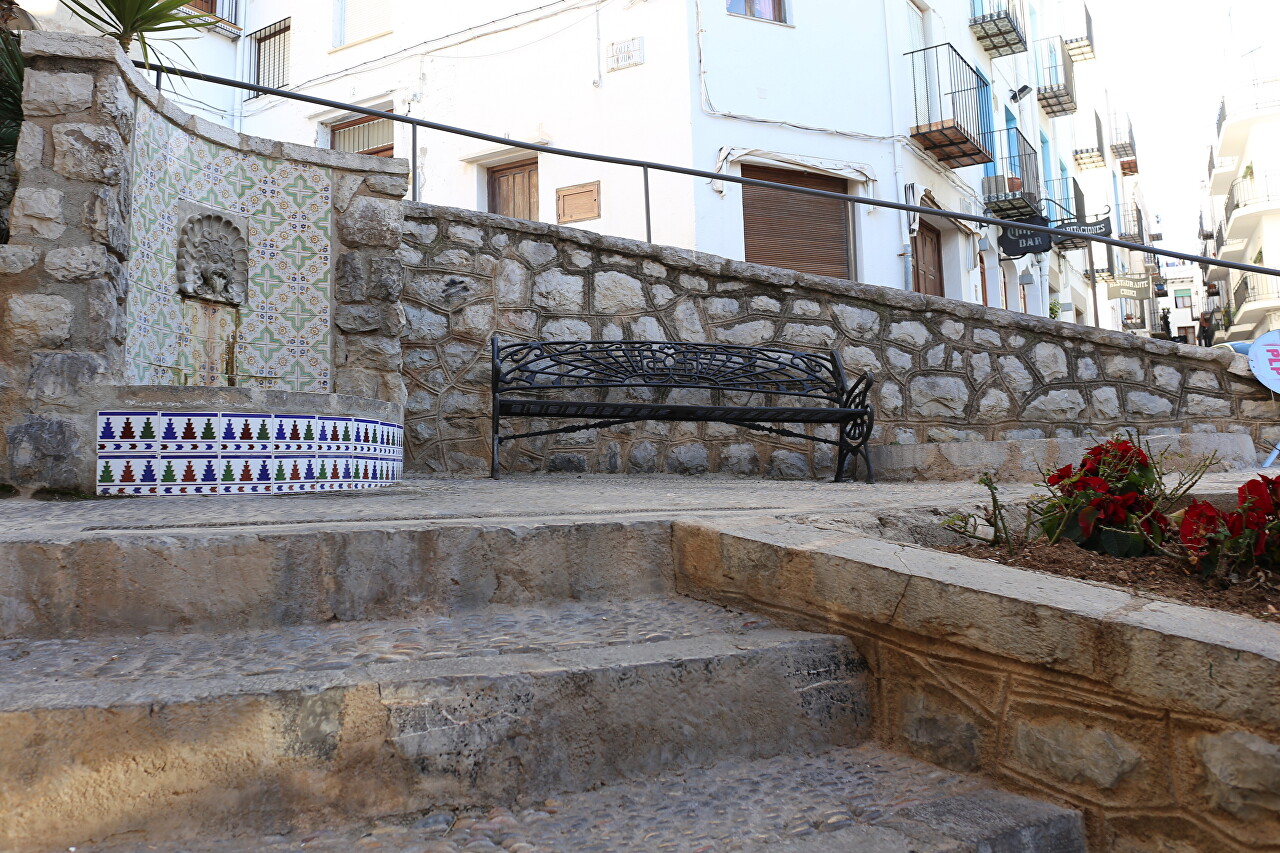
After passing through the Fosc portal inside the fortress, you will find
yourself on Plaza Ayuntamiento, where the Peñíscola Municipality
building is located and this place is considered the official center of
the city...read more 
Peñíscola Old City Streets
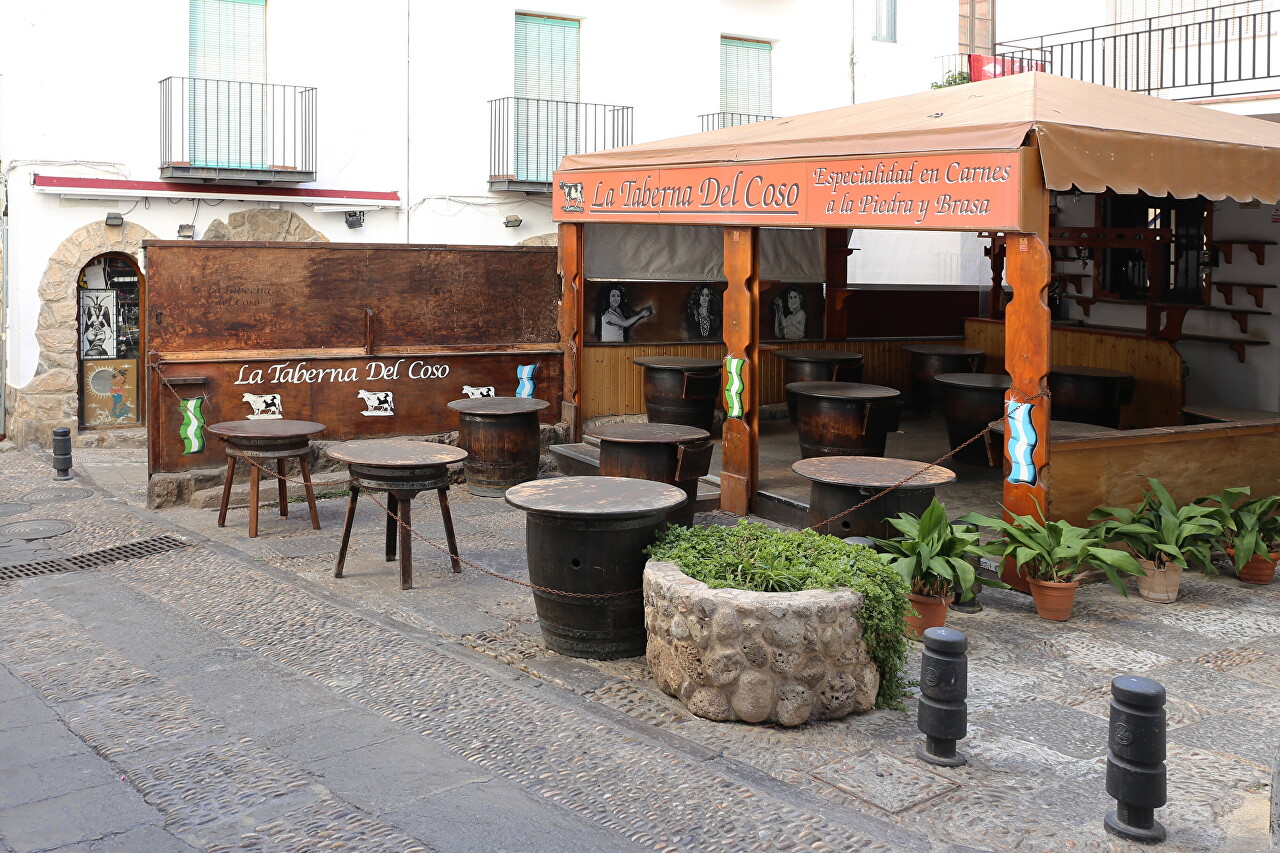
Skirting the peninsula along the ramparts, I entered the narrow streets
of the old town. The city has retained its 17th-and 18th-century
buildings, and the width of the streets is clearly affected by the
limited space of the fortress walls...read more 
Sunset on South Beach
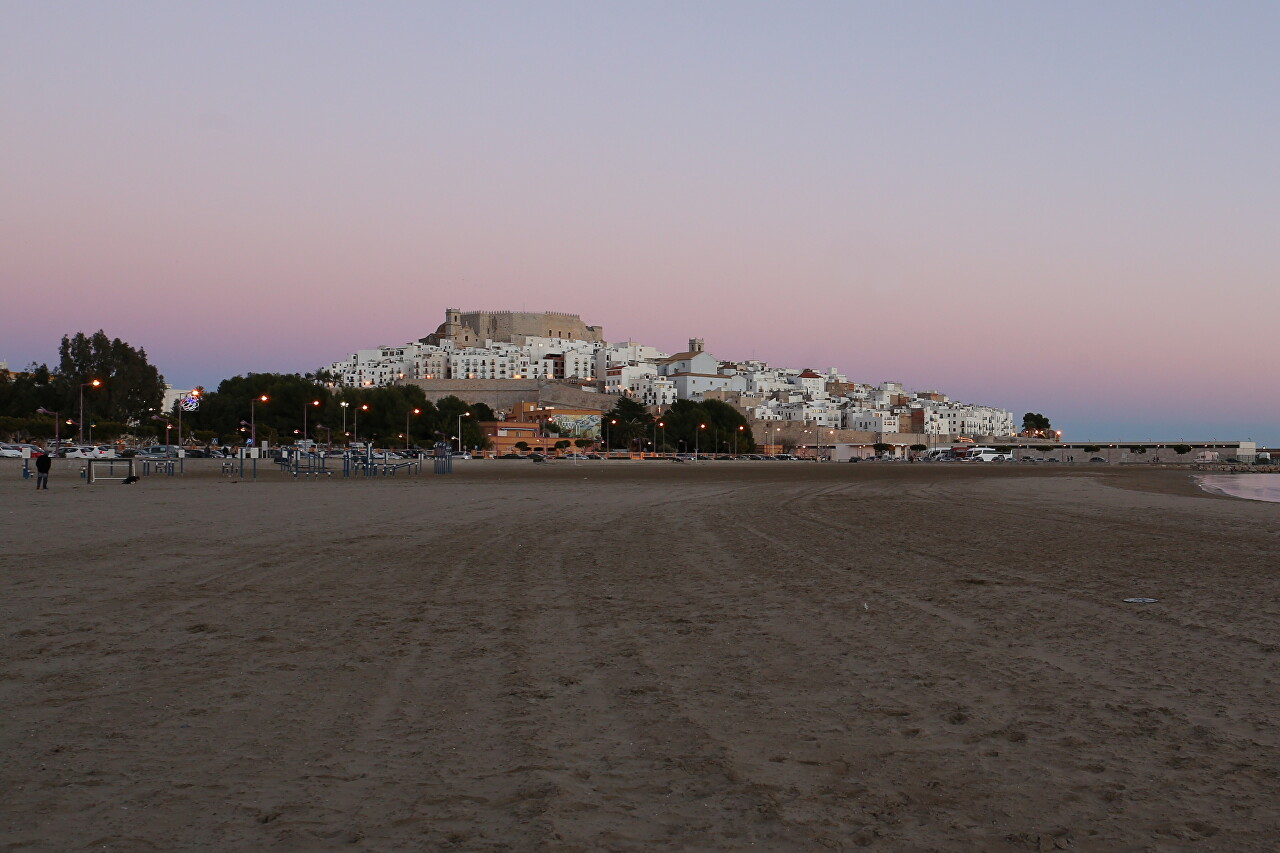
In the late afternoon, I set out to find a place to have dinner while
enjoying the views of the fortress in the setting sun. I soon found one
of these cafes across from South Beach, near Constitution Square...read more 
Bridge of Love
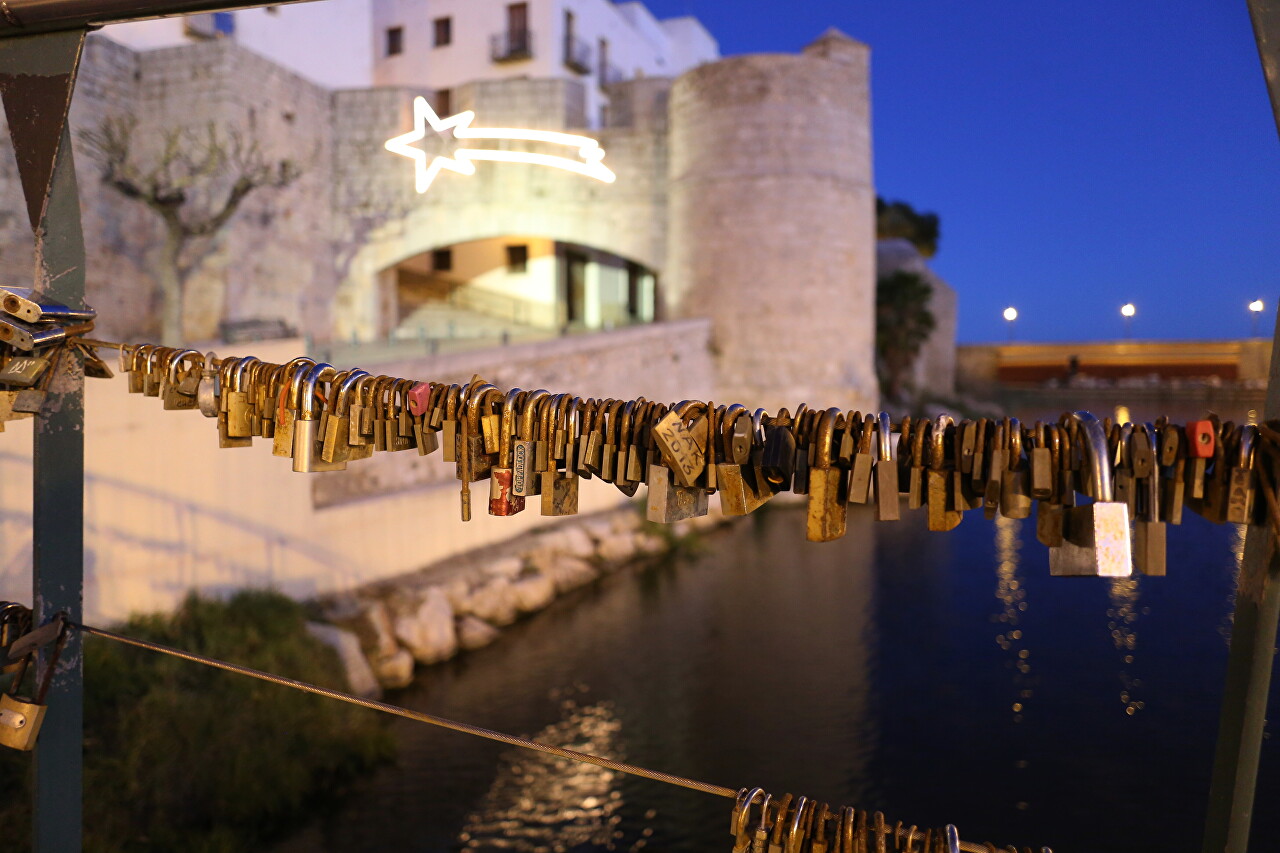
The port pier is separated from the fortress by a small pond called
Estany del Port, where the waters of the Font de Dins spring flow. The
spring was discovered in 1578 and is located on the northern side of the
St. Mary's bastion...read more 
Sunday Evening at Portal de Santa Maria
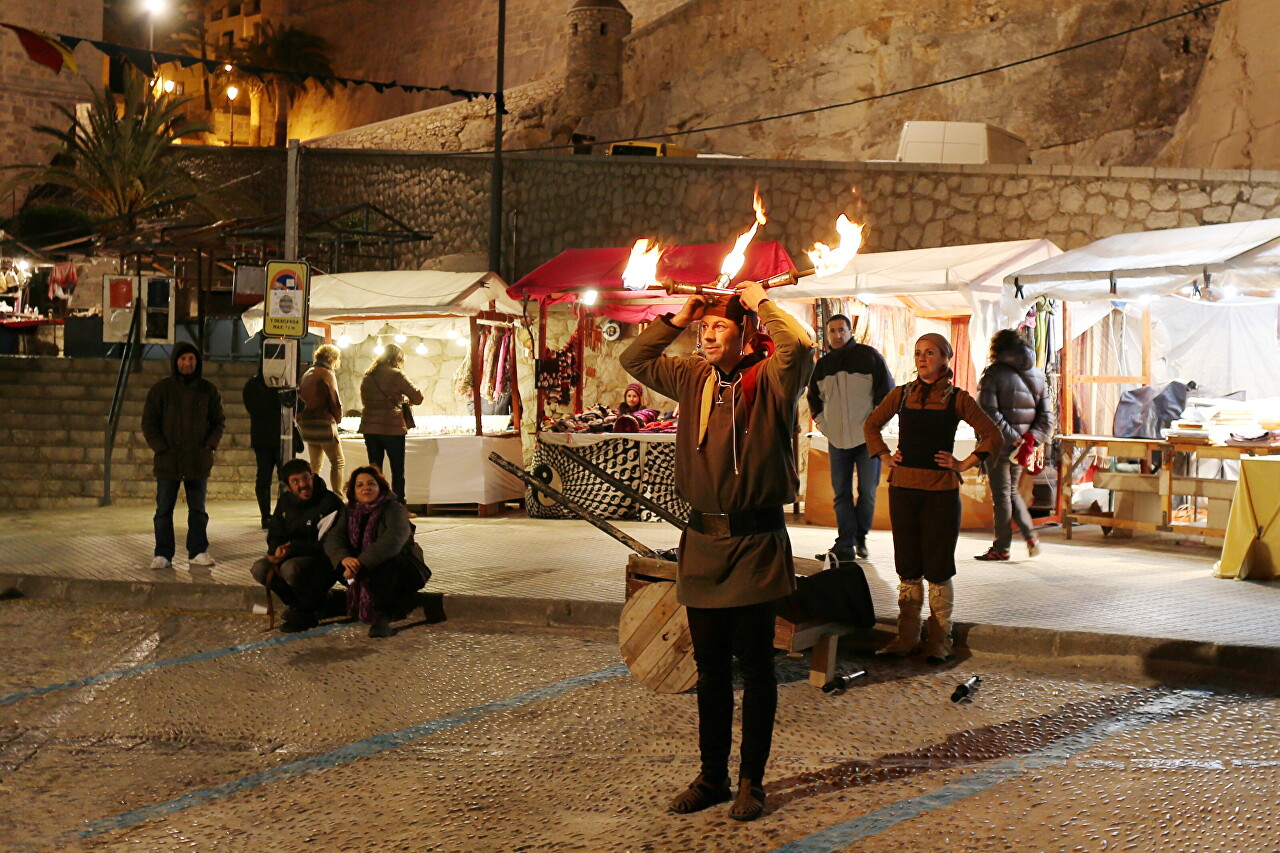
After watching the sunset and having dinner on the South Beach, I
returned to the fortress walls. It was already dark and the Christmas
lights were on in the streets...read more 
Night Walk in Peñíscola
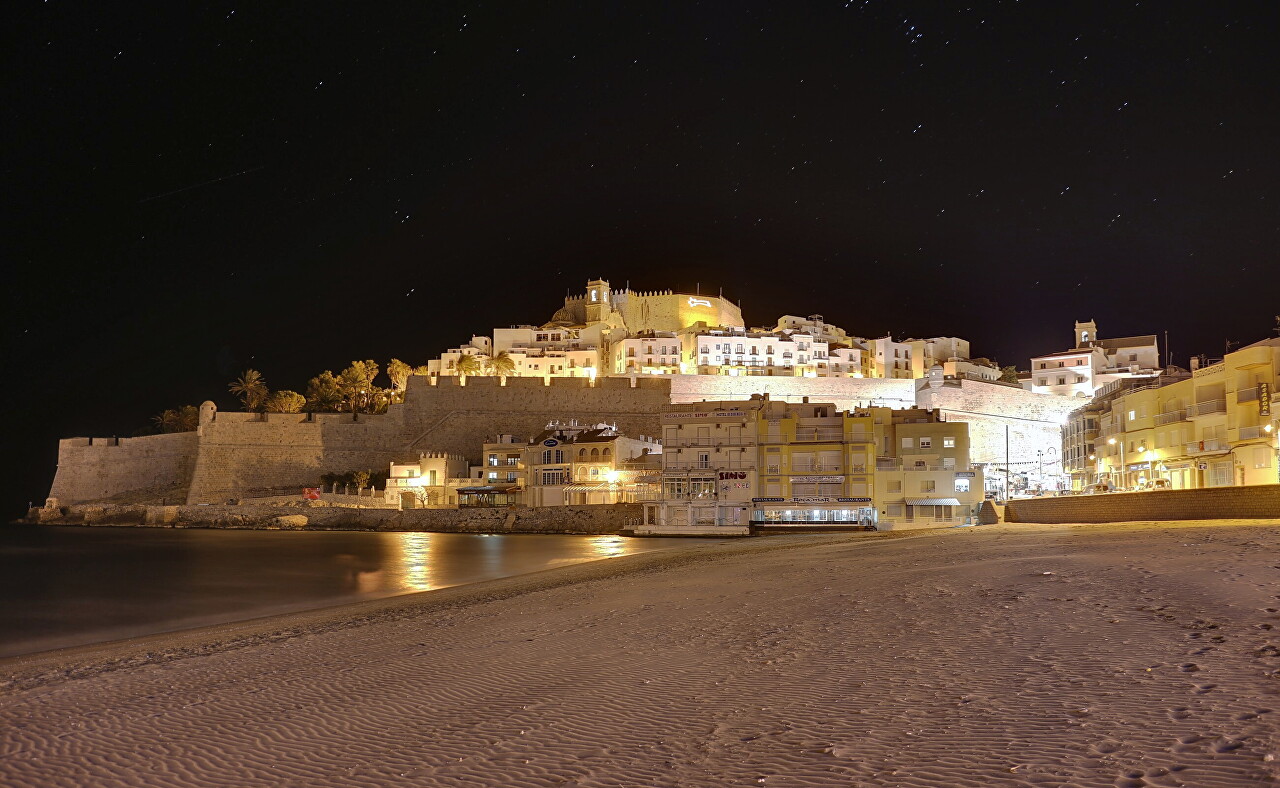
I started my night photo shoot on the Northern Beach, or rather on the
sandy bridge connecting the Peniscola fortress with the shore. On this
side, the fortress is protected by the Bateria de los Foses and Baluarte
de Santiago batteries, above which you can see the trees of the
Artillery Park...read more 
Avinda de la Mar and Avenida del Papa Luna
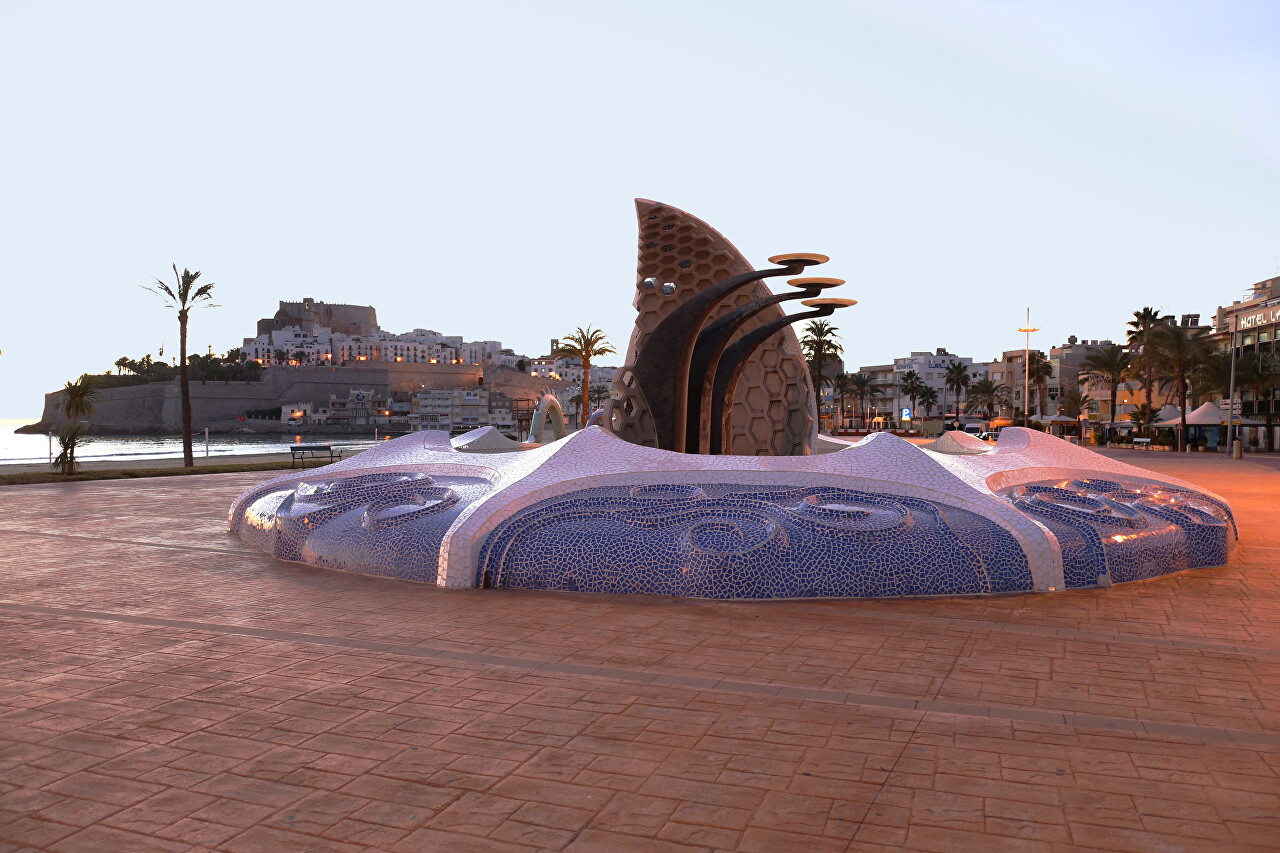
The northern shore of the isthmus connecting the fortress with the land
forms a small bay, along the shore of which runs a wide Marine Boulevard
(Avinguda de la Mar)...read more 
Sunrise on North Beach
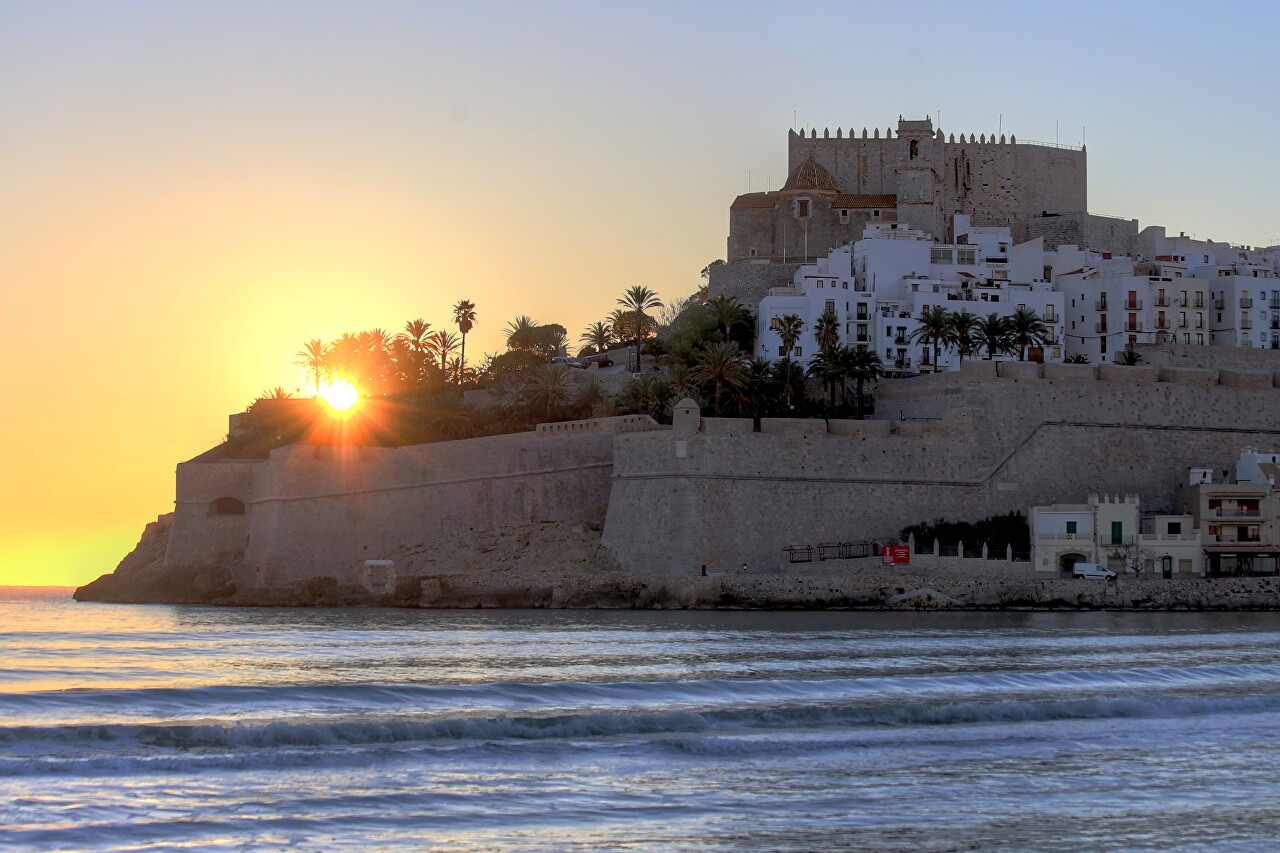
Meanwhile, a bright solar segment appeared above the sea horizon, turning the sky and the crests of the waves red and gold...read more 
Plaza de la Constitución
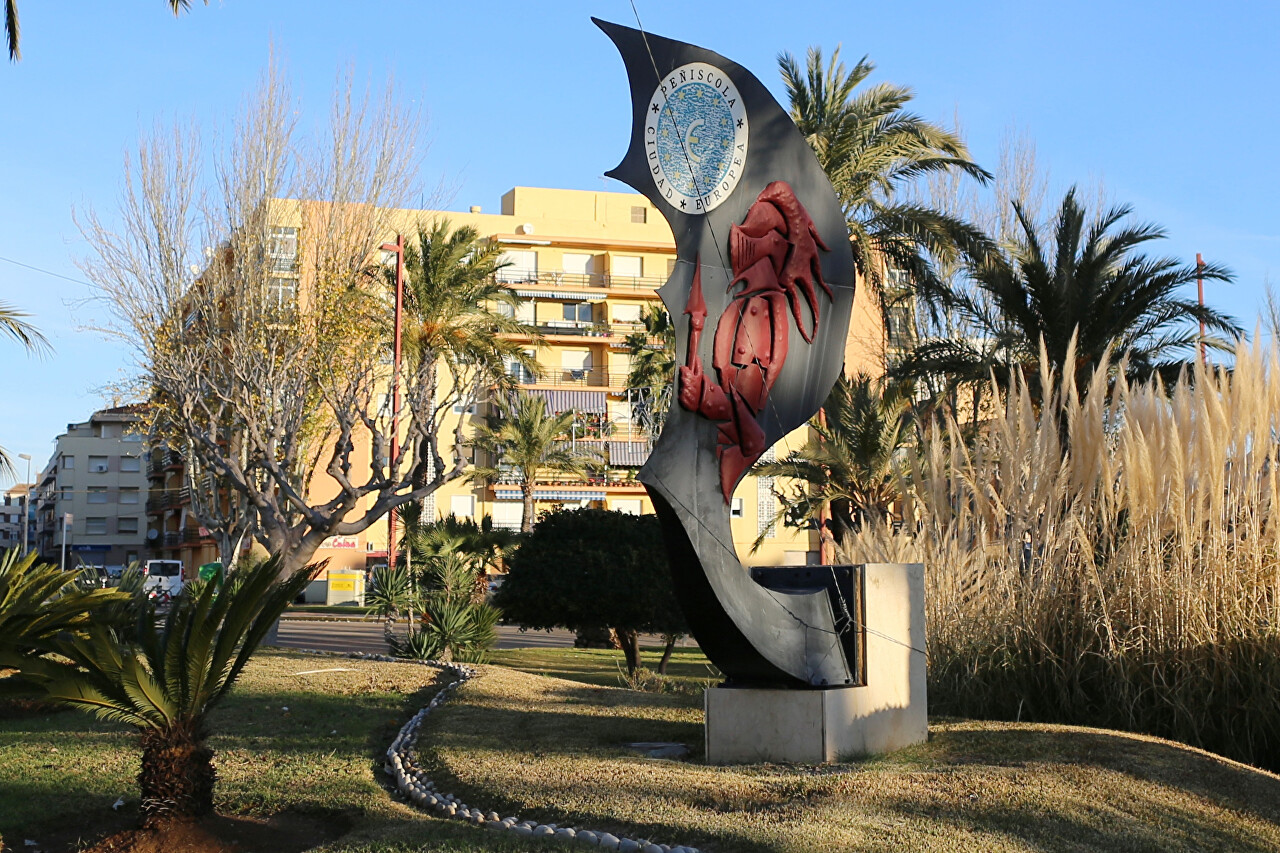
After meeting the sunrise on the northern embankment, I headed to the
modern part of the city. Ullal de l'Estany Lake is located in the heart
of new Peniscola. In fact, this is an artificial pond, arranged on a
river flowing out of a huge swamp that separates the coast from the
mountains...read more 
Morning on the South Beach
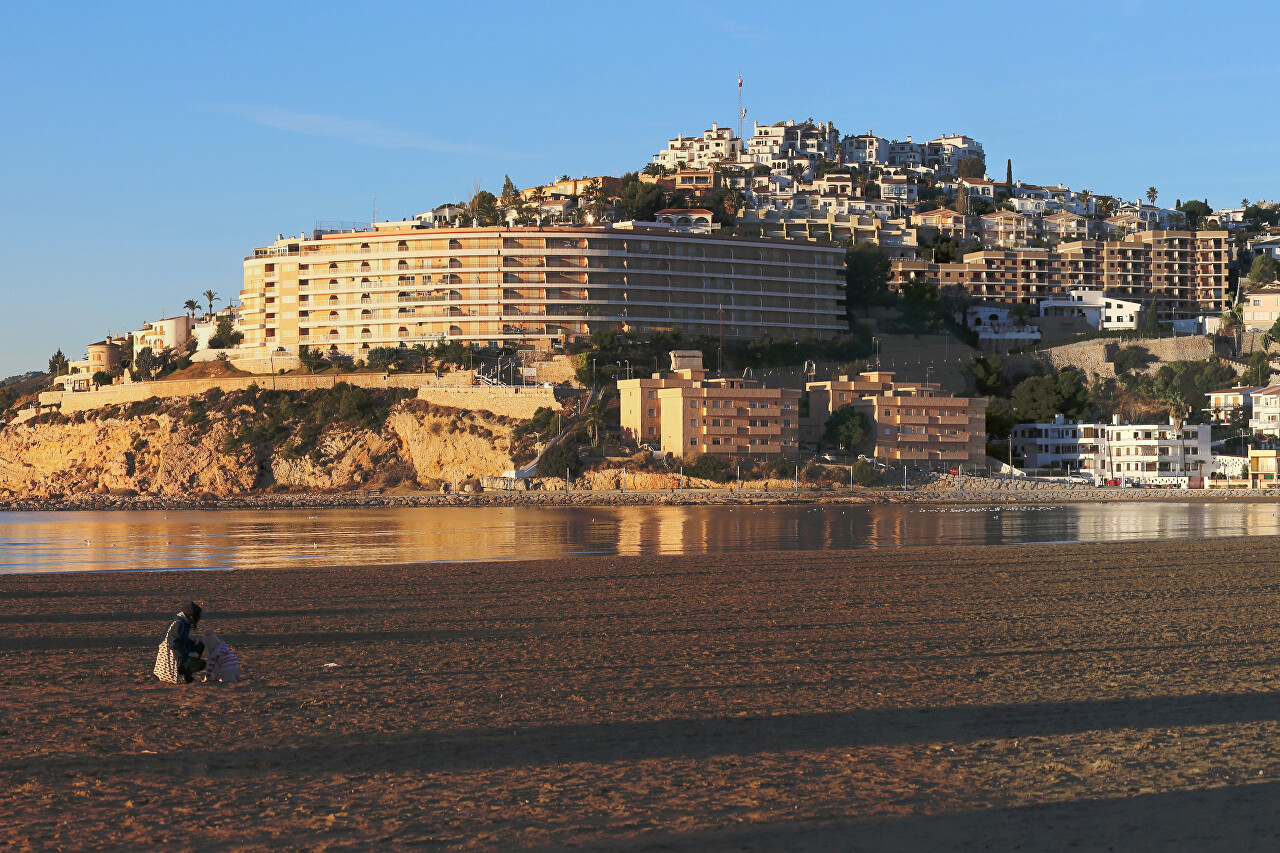
Constitution Square borders the Southern Beach, which is a sandy arc
60-80 meters wide and 400 meters long. The beach is protected from the
sea by the pier of the Fishing Harbor, so there are no big waves here
and the water warms up earlier at the beginning of the season than on
the northern beach...read more 
Walk Along the Breakwater
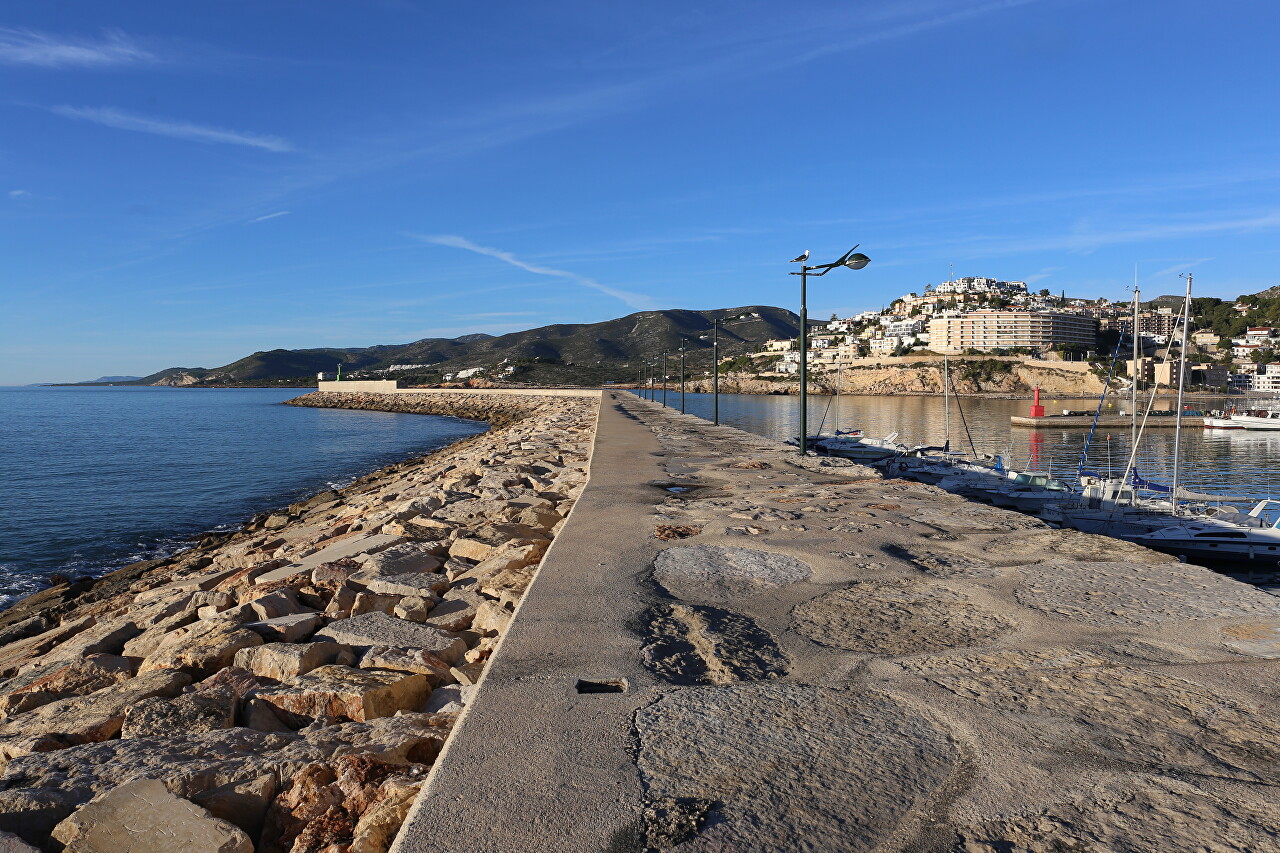
The base of the pier is made up of giant blocks of stone, and we can
only guess how they were brought here. On the concrete terraces that
descend to the water, during the holiday season, crowds of vacationers
gather in the evenings to watch the
sunset...read more 
Estany del Port
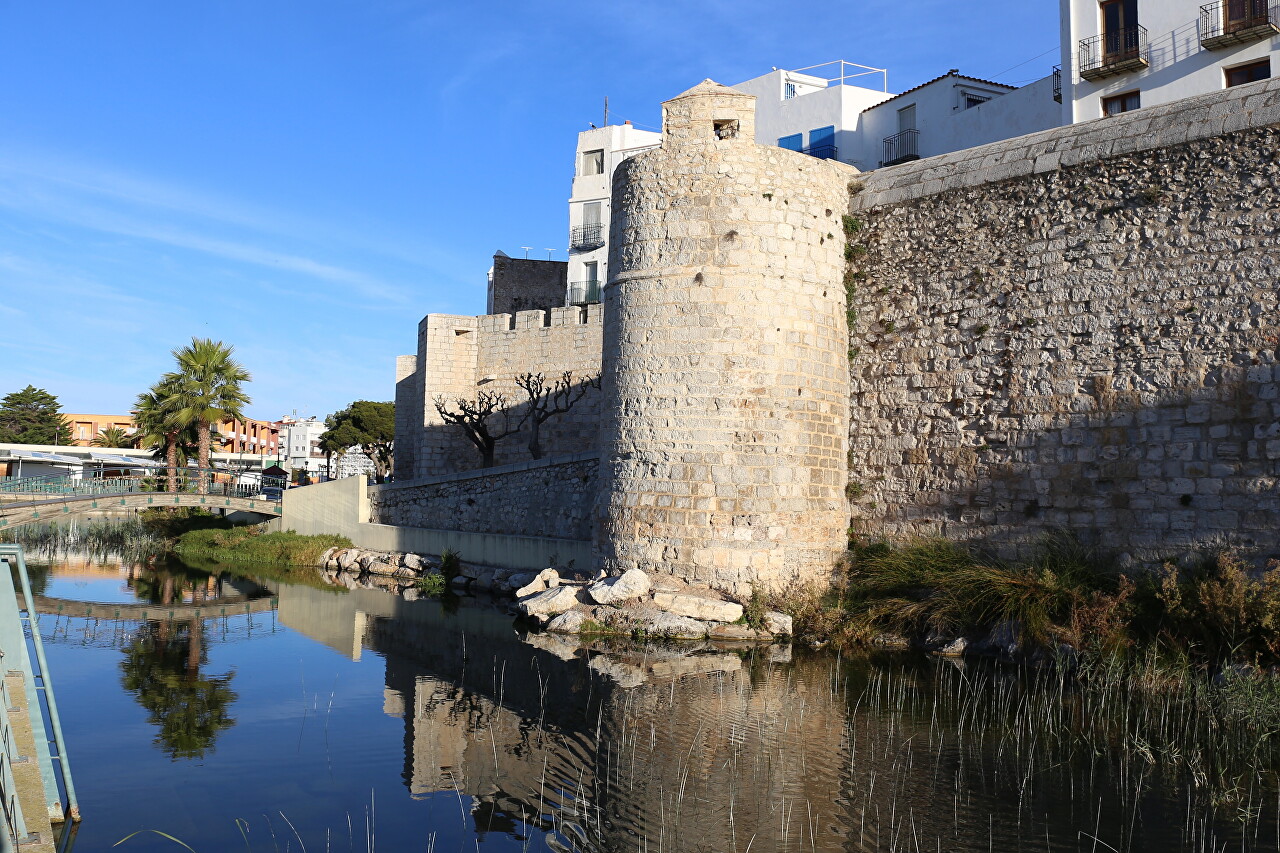
Previously, sea waves broke against the walls, but after the
reconstruction of the port and the construction of a pier, a reservoir
isolated from the sea was formed between the wall and the port pier,
called Estany del Port (port pond)...read more 